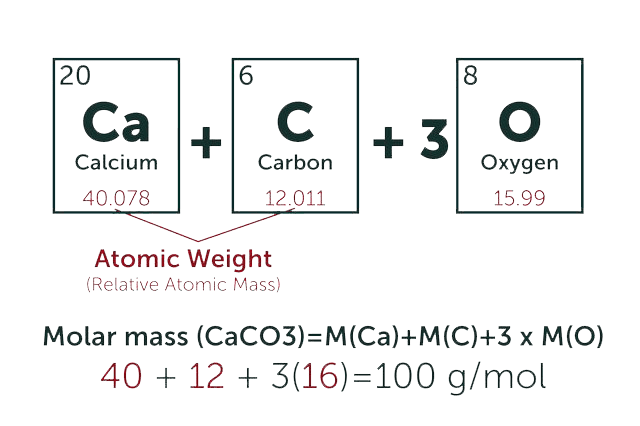Epothilon A
* Please be kindly noted products are not for therapeutic use. We do not sell to patients.

| Category | Antibiotics |
| Catalog number | BBF-01700 |
| CAS | 152044-53-6 |
| Molecular Weight | 493.65 |
| Molecular Formula | C26H39NO6S |
| Purity | >98% |
Online Inquiry
Description
Epothilons A is a 16-membered macrolide antibiotic produced by the myxobacterium Sorangium cellulosum. It has strong cytotoxicity and has the effect of resisting plant pathogenic fungi.
Specification
| Synonyms | (-)-Epothilone A; Epo A; NSC-684362; (1R,5S,6S,7R,10S,14S,16S)-6,10-dihydroxy-5,7,9,9-tetramethyl-14-[(E)-1-(2-methyl-1,3-thiazol-4-yl)prop-1-en-2-yl]-13,17-dioxabicyclo[14.1.0]heptadecane-8,12-dione |
| Storage | -20°C |
| IUPAC Name | (1S,3S,7S,10R,11S,12S,16R)-7,11-dihydroxy-8,8,10,12-tetramethyl-3-[(E)-1-(2-methyl-1,3-thiazol-4-yl)prop-1-en-2-yl]-4,17-dioxabicyclo[14.1.0]heptadecane-5,9-dione |
| Canonical SMILES | CC1CCCC2C(O2)CC(OC(=O)CC(C(C(=O)C(C1O)C)(C)C)O)C(=CC3=CSC(=N3)C)C |
| InChI | InChI=1S/C26H39NO6S/c1-14-8-7-9-19-21(32-19)11-20(15(2)10-18-13-34-17(4)27-18)33-23(29)12-22(28)26(5,6)25(31)16(3)24(14)30/h10,13-14,16,19-22,24,28,30H,7-9,11-12H2,1-6H3/b15-10+/t14-,16+,19+,20-,21-,22-,24-/m0/s1 |
| InChI Key | HESCAJZNRMSMJG-KKQRBIROSA-N |
| Source | Sorangium cellulosum |
Properties
| Appearance | White Crystals |
| Application | Antineoplastic Agents |
| Antibiotic Activity Spectrum | fungi |
| Boiling Point | 683.3°C at 760 mmHg |
| Melting Point | 95°C |
| Density | 1.143 g/cm3 |
| Solubility | Soluble in DMSO |
Reference Reading
1.New class of squalene-based releasable nanoassemblies of paclitaxel, podophyllotoxin, camptothecin and epothilone A.
Borrelli S1, Christodoulou MS1, Ficarra I1, Silvani A1, Cappelletti G2, Cartelli D2, Damia G3, Ricci F3, Zucchetti M3, Dosio F4, Passarella D5. Eur J Med Chem. 2014 Oct 6;85:179-90. doi: 10.1016/j.ejmech.2014.07.035. Epub 2014 Jul 27.
The present study reports the preparation of a novel class of squalene conjugates with paclitaxel, podophyllotoxin, camptothecin and epothilone A. The obtained compounds are characterized by a squalene tail that makes them able to self-assemble in water, and by a drug unit connected via a disulfide-containing linker to secure the release inside the cell. All the obtained compounds were effectively able to self-assemble and to release the parent drug in vitro. Disulfide-containing paclitaxel-squalene derivative showed a similar biological activity when compared to the free drug. Immunofluorescence assay shows that this squalene conjugate enters A549 cells and stain microtubule bundles. The results described herein pave the way for different classes of squalene-based releasable nanoassemblies.
2.Enzymatic synthesis of lactosylated and sialylated derivatives of epothilone A.
Parajuli P1, Pandey RP1, Gurung RB1, Shin JY1, Jung HJ1, Kim DH2, Sohng JK3. Glycoconj J. 2016 Apr;33(2):137-46. doi: 10.1007/s10719-015-9646-y. Epub 2016 Feb 6.
Epothilone A is a derivative of 16-membered polyketide natural product, which has comparable chemotherapeutic effect like taxol. Introduction of sialic acids to these chemotherapeutic agents could generate interesting therapeutic glycoconjugates with significant effects in clinical studies. Since, most of the organisms biosynthesize sialic acids in their cell surface, they are key mediators in cellular events (cell-cell recognition, cell-matrix interactions). Interaction between such therapeutic sugar parts and cellular polysaccharides could generate interesting result in drugs like epothilone A. Based on this hypothesis, epothilone A glucoside (epothilone A 6-O-β-D-glucoside) was further decorated by conjugating enzymatically galactose followed by sialic acids to generate epothilone A 7-O-β-D-glucopyranosyl, 4'-O-α-D-galactoside i.e., lactosyl epothilone A (lac epoA) and two sialosides of epothilone A namely epothilone A 7-O-β-D-glucopyranosyl, 4'-O-α-D-galactopyranosyl 3″-O-α-N-acetyl neuraminic acid and epothilone A 7-O-β-D-glucopyranosyl, 4'-O-α-D-galactopyranosyl 6″-O-α-N-acetylneuraminic acid i.
3.Effects of Epothilone A in Combination with the Antidiabetic Drugs Metformin and Sitagliptin in HepG2 Human Hepatocellular Cancer Cells: Role of Transcriptional Factors NF-κB and p53.
Rogalska A1, Sliwinska A, Kasznicki J, Drzewoski J, Marczak A. Asian Pac J Cancer Prev. 2016;17(3):993-1001.
Type 2 diabetes mellitus patients are at increased risk of many forms of malignancies, especially of the pancreas, colon and hepatocellular cancer. Unfortunately, little is known of the possible interaction between antidiabetic drugs and anticancer agents. The present study investigates the influence of metformin (MET) and sitagliptin (SITA) on the in vitro anticancer activity of the microtubule depolymerization inhibitor agent epothilone A (EpoA). Hepatocellular liver carcinoma cell line (HepG2) viability and apoptosis were determined by the MTT test and by double staining with PO-PRO-1 and 7-aminoactinomycin D, respectively, after treatment with EpoA, metformin or sitagliptin. The levels of nuclear factor NF-κB and p53 were evaluated in the presence and absence of inhibitors. While EpoA and MET inhibited HepG2 cell proliferation, SITA did not. EpoA and SITA induced higher p53 levels than MET. All tested drugs increased the level of NF-κB.
4.Investigation of inclusion complex of epothilone A with cyclodextrins.
Xiao CF1, Li K2, Huang R1, He GJ1, Zhang JQ1, Zhu L1, Yang QY1, Jiang KM1, Jin Y3, Lin J4. Carbohydr Polym. 2014 Feb 15;102:297-305. doi: 10.1016/j.carbpol.2013.11.049. Epub 2013 Dec 4.
The inclusion complexation of Epothilone A with native cyclodextrin (β- or γ-CD) and its derivative hydroxypropyl-β-cyclodextrin (HPβCD) were prepared. Their behavior, characterization, and binding ability were investigated in both solution and the solid state by means of UV-vis, NMR, XRD, DSC and SEM. The results show that the water solubility and solution stability obviously increased in the inclusion complex with cyclodextrins. Meanwhile, the inclusion complexes still retained anticancer activity against A549 and MCF-7 cells, similar to free Epothilone A. This satisfactory water solubility, high solution stability, and high anticancer activity of the Epothilone A/CD complexes will be potentially useful as an anticancer therapy.
Recommended Products
| BBF-03827 | Polymyxin B sulphate | Inquiry |
| BBF-04134 | ECHINULIN | Inquiry |
| BBF-05829 | Auristatin F | Inquiry |
| BBF-05801 | Hypericin | Inquiry |
| BBF-04609 | 1,1-Dimethylbiguanide hydrochloride | Inquiry |
| BBF-05916 | PNU-159682 | Inquiry |
Bio Calculators
* Our calculator is based on the following equation:
Concentration (start) x Volume (start) = Concentration (final) x Volume (final)
It is commonly abbreviated as: C1V1 = C2V2
* Total Molecular Weight:
g/mol
Tip: Chemical formula is case sensitive. C22H30N4O √ c22h30n40 ╳


